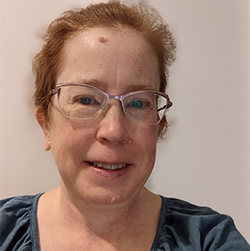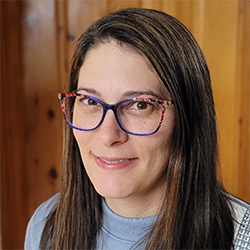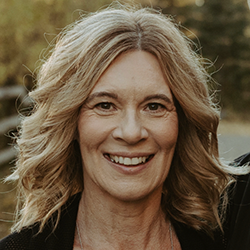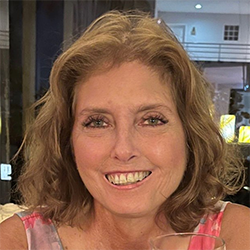For the millions of Canadians living with rare diseases — along with their caregivers — support and community are available.
One in 12 Canadians is living with a rare disease, which is defined as a disease that affects less than one person per 2,000 people. It’s estimated that there are over 7,000 rare diseases, and they’re often genetic, chronic, and life-threatening. Although each rare disease impacts a relatively small number of patients, the collective impact is massive.
Because their diseases are uncommon and infrequent, people living with a rare disease commonly face challenges in getting diagnosed. Their diagnostic odysseys often see them going from specialist to specialist, sometimes not even getting past their family physician in their quest for answers. On average, it takes rare disease patients six to eight years to receive a proper diagnosis.
Getting accurately and efficiently diagnosed is critical for those living with rare diseases, as it’s only when patients — along with their loved ones, caregivers, and health care practitioners — know what they’re dealing with that effective disease management and treatment can begin. As such, raising awareness of the prevalence and types of rare disease — including symptoms to watch for — is essential.
This Rare Disease Month, we spoke to four families and individuals affected by rare diseases. While approximately eight per cent of Canadians have a rare disease, countless more are affected. Patients and caregivers are all around us, often struggling in silence and facing their daily burdens with unimaginable braveness. They’re our teachers, our accountants, and our servers. They’re our friends and our family. They could be us.
Living with ASMD

Sandy of Toronto, Ont., was diagnosed with acid sphingomyelinase deficiency (ASMD), also known as Niemann-Pick disease, at the age of two. ASMD is an extremely rare genetic disease that’s characterized by an enzyme deficiency, which results in the build-up of a substance known as sphingomyelin within the body. This leads to ASMD’s many manifestations. Depending on the sub type of ASMD (Type A, Type A/B and Type B), this can include a combination of brain and nervous system symptoms, issues with bones and joints, and problems with the spleen, liver, lungs, and other organs with a wide spectrum of severity.
From her early years until today, Sandy has struggled with exercise intolerance, shortness of breath, and extreme fatigue. Her parents were told not to expect her to live past the age of four, but Sandy is now in her late 50s. She’s proud of the thriving career she has built as an occupational therapist and of the leadership role she has taken in the ASMD community. As President of the International Niemann-Pick Disease Alliance and Vice Chair of Niemann-Pick Canada ’s Board of Directors, Sandy is passionate about patient advocacy. She wants to make sure that no one goes through what she did as a young girl. “Growing up, I never met anyone else with ASMD,” she says. “It was a lonely space in terms of not having a way to connect.”
Today, Sandy finds relief in her support community, including a tight-knit group of close friends, family members, and the ASMD community, within which she has built cherished relationships. Throughout it all, she remains hopeful about the future.
We’ve been extremely fortunate in terms of being able to build a community of clinicians and researchers who are very dedicated to this disease and to finding paths forward. I want to make sure that’s a path that continues.
A family’s journey with Pompe disease

Katerine and Joel of Sainte-Julienne, Quebec, were ecstatic when their first child, Romy, was born. They never imagined that Pompe disease — a rare genetic neuromuscular disorder that causes progressive muscle weakness and the loss of muscle tissue — would enter their family’s doorstep.
Pompe disease occurs due to an enzyme deficiency that results in the build-up of glycogen in the muscles. This leads to symptoms such as difficulty performing physical activities, trouble chewing and swallowing, and an inability to rise from a seated position. Left untreated, Pompe disease can result in irreversible muscle damage and permanent confinement to a wheelchair.
The day they learned baby Romy was sick is etched in Katerine and Joel’s memories. “I never thought I would be so affected by something,” says Joel. “Nothing mattered more than her being well.”
The family’s life has revolved around helping Romy, now 10, live life to its fullest. They attend physiotherapy, immunotherapy, cardiology, and other specialist’s and treatments appointments regularly. In the early days, they describe her care as being a full-time job. Now, with a solid treatment protocol and excellent care team, Romy is doing much better. “She loves music,” says Katerine, smiling. “She’s always singing. She’s a big fan of the singer Pink and all musicals, especially Grease. She also loves animals, swimming, and unicorns.” Romy has blossomed thanks to a strong support network. Her parents beam with pride when describing her accomplishments — things they weren’t sure she would ever do, including walking and talking.
As caregivers, Katerine and Joel have also found relief thanks to their support network.
Our inner circle of friends and family is very understanding.
The couple is also supported by their employers, Romy’s care team, and patient support groups like the Canadian Association of Pompe.
Taking Fabry disease one day at a time

For Rhonda, learning about Fabry disease has been a part of daily life for decades. She’s been married to her husband, Robert, for 34 years — and the entire time he has been living with Fabry, a rare genetic disease caused by an enzyme deficiency that results in the accumulation of a fatty substance in the cells.
Fabry disease affects various organs and its symptoms can include severe pain in the hands and feet, red spots (angiokeratoma) on the midsection, and ringing in the ears. “Fabry has affected Robert in a lot of ways,” says Rhonda. “He experiences pain in his extremities. He’s on daily pain meds. But he’s very resilient. He has always been the kind of person who doesn’t let anything hold them back.”
In July of 2021, Robert had a serious heart event and was taken by helicopter from their small Central Albertan town to a bigger hospital. “We had a real scare,” says Rhonda. “But we were very lucky. The doctors saved his life.” Now with an implantable cardioverter-defibrillator in place, Robert is back to his usual activities — albeit at a slower pace.
“Fabry disease is part of Robert’s life and part of all of our lives,” says Rhonda, noting the impact the disease has had on their two adult daughters.
It’s always on our minds. We’re a very close family and I’m proud that we’re always able to find the positive.
Rhonda also finds relief from the support they receive — the incredible doctors they have in their area, the specialists they can count on for answers, and the community support offered by the Canadian Fabry Association. “The Canadian Fabry Association members are like family,” she says. “We really count on each other.”
Learning to live with aTTP

After surviving neck cancer, Lorraine of Sherwood Park, Alberta, thought her worst nightmare was over. A surprise diagnosis of acquired thrombotic thrombocytopenic purpura (aTTP) proved otherwise.
aTTP is a rare and sometimes fatal blood disorder caused by a dysfunction in the blood-clotting process. It causes small blood clots to form in blood vessels throughout the body, which can result in blood clot-related symptoms (headaches, confusion, distorted vision, chest pain, seizures, tiredness, and jaundice as well as more serious consequences including stroke, heart attack, and kidney failure) as well as bleeding-related symptoms (bleeding from the gums or nose, stomach pain, blood in the urine, and purple bruises and/or red or purple dots on the skin). If left untreated, aTTP has an acute mortality rate of up to 90%. With treatment, most patients go into remission but about 30% will relapse.
When Lorraine ended up in the hospital and was diagnosed with aTTP, her life changed. She had to stop teaching group fitness classes, has had to cut vacations short, and became wary of looking after her grandkids, knowing how contracting a cold or flu could disproportionately affect her. After a few relapses over the past several years however, she has learned to carefully manage her condition,
“Not a day goes by where I don’t think about it,” she says. “But I have to keep living.” Nowadays, Lorraine is enjoying an active and fulfilling lifestyle. She attends fitness classes, plays pickleball, socializes regularly, spends time with her children and grandkids, and is currently hosting a Ukrainian refugee family. “I do the things that bring me joy,” she says.
For other Canadians living with aTTP, the Answering TTP Foundation is here to help support aTTP patient care, education, and research.
Canadians with rare diseases don’t need to go through this journey alone. Patient support groups are here to help, and new treatments for many rare diseases are in development or approved but awaiting reimbursement decisions, bringing hope and promise.
To learn more and find support, visit:
This article was supported by a leading research-based pharmaceutical company.


